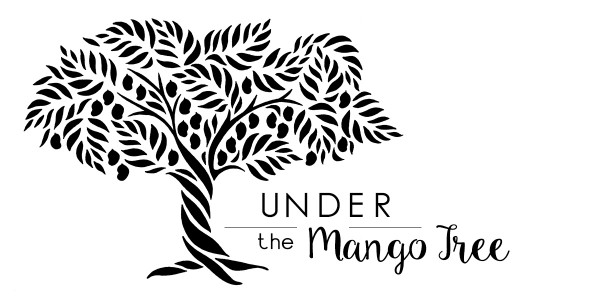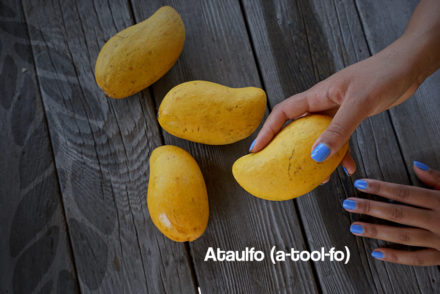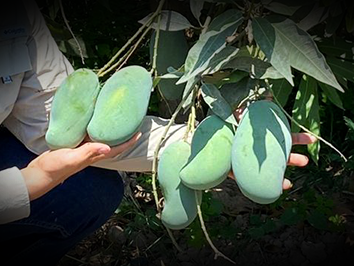A timely lesson in the flowers…..
By now, we all know that during any mango season, the weeks between when the trees flower and when they begin to set fruit and formation are critical in determining crop outlooks. For the Mexican season, this window runs from now through early January, with particular emphasis on those first weeks of January—when harsh weather and the infamous La Ventosa winds are most likely. These cold winds can knock larger, formed fruit to the ground, potentially impacting the crop. Until the season formally begins, we move forward with the information at hand, assessing, hypothesizing, and, in many ways, simply hoping for the best, while maintaining good orchard care.
Despite the cold settling around me here in Northern California, news of mango blooms beginning to blanket southern Mexico sets mango flowers on the top of my mind. Mango blossoms are a gorgeous signal of possibility, filling us with hope and promise—that’s what I love about the onset of the Mexican mango season. The way we must be hopeful. Less than 1% of mango blooms will actually form fruit, and while no one knows which ones will make it, the sheer abundance gives an illusion of endless potential: each flower might become a luscious, juicy mango. Seeing millions of these dazzling blooms burst from the trees like fireworks, how can we not feel hopeful?
The mosaic of mango blooms emerging across southern Mexico has provided a target start date for the export season. According to several growers with whom I spoke in Atlanta at the IFPA show and via WhatsApp last week, the consensus is that the Oaxacan Ataulfo season will begin around January 20th, give or take a few days. The start timing is calculated based on a simple math: once the trees bloom and pollination occurs, a small percentage of the blossoms set into fruit and mature over the next 100 to 150 days (roughly 3-4 months). Recent heavy rains these last several days stir a mix of cautious optimism and trepidation into the blooms of hope.
I’ll hold off on a detailed crop report until next week when there’s more to share, especially with the recent rains now a factor. For now, I want to focus on the wonder of mango blooms and share how each delicate flower transforms into fruit—a reminder of how spectacular and hopeful life can be. Basically —it’s time for a refresher on the “birds and bees” of mangoes.
Mango Flowers (Birds & The Bees)
I think it’s important that I give a little insight into the biology of a mango flower – or what I like to call “its xxx parts.” The first phase of flowering is Bud Swelling when the mango flowers first emerge from the branches. Second phase is Panicle Elongation, when the tree produces large clusters of flowers at the ends of the branches, called panicles. These clusters are about 16 inches long with deep crimson “stems” and tiny off white or pale-yellow flowers. They smell mildly fragrant and sweet. It can take several weeks for a bud to develop (Phase 1) It takes about 2 weeks for a little mango bud to turn into a flower ( Phase 2). The flowers open over a period of a few days and the full bloom period (defined by the blooms being fully opened) lasts only a few more days this is phase, Flowering/Peak Flowering.
Mango trees produce flowers that are both male and female, making them monecious (which means they can self-pollinate and cross-pollinate). Depending on variety and region, each tree has a certain percentage of male flowers while the rest are hermaphroditic (male and female). Most trees average about a quarter of all flowers being male. Most varieties flower once per season over an extended period of time (typically yielding on an ongoing timing of mature fruit) during or near the end of winter or the cold season. “Cold” nights and dry weather are optimal conditions for flowering. If conditions are too cold, the flowers die. Too much wind or rain? They fall off. A certain number of blooms, approximately 99%, are typically aborted by the tree regardless of weather. If the weather is not ideal, the trees can start early or late with the blooming process.
Pollination
Phase 4 is Pollination. In order for us to indulge in the tropical sweet flavor and texture of a good mango, pollen first needs to be made and the flowers need to be pollinated. The process of pollen creation in plants is called meiosis and most of that process is very scientific and my brain has only so much capacity so I rarely go down that path. From what I can gather from my lay(wo)men understanding, the cells divide and grow in quantity. The pollen gets produced in the pollen sacs which are located on the ends of the male flowers (stamen).
Mango flowers are typically pollinated by self-pollination and cross-pollination. The “selfers” (as I learned that they are nicknamed) are pollinated by the pollen from another flower on the same tree. The “outcrossers” are the ones pollinated by the pollen from another tree.
Wind, butterflies, fruit bats, wasps, flies, beetles, ants, and a myriad of other flying and climbing creatures are the main pollinators of mangoes. Interestingly, honeybees do not love the flavor of mango pollen and are not significant pollinators.
A fun fact is that the clumps and clusters of mangoes on a tree likely point to insects as the pollinator culprit, whereas the sporadic mango hanging is likely wind pollinated.
Fruit Formation (Fruit Set)
Once the flowers are pollinated, they enter into phase 5 Fruit Formation. In this phase less than 1% becomes fruit and takes on the process called fruit set. The fruit set happens after the flower opens and is pollinated and fertilized. It takes several weeks for significant development. Once the fruit has set, it becomes much easier to gauge yields for the season. Before fruit set, it’s a total guessing game.
Like the bloom stage, the fruit setting stage is highly affected by the weather. Despite the desire to bloom in the cold, the fruit setting stage prefers warmer and more consistent temperatures and dry weather. Wet, rainy weather isn’t ideal for healthy fruit development. Heavy rains can damage the fruit, deter it, or cause mold problems. Or if heavy rains occur after the fruit is pollinated, it can wash right off. A lot of quality problems occur when rains occur between fruit flowering and fruit setting stages. Fruit drop, another serious problem, occurs when rains are prevalent as the fruit is in its final setting phase. It literally just drops off the branch or shrivels up still attached.
Maturity
Once the fruit sets and sticks (as I like to call it), it basks in the sun feeding off the soils (you see why organic is important right?), growing bigger, juicier and more blush tones as the sunlight penetrates the opening between the leaves and imparts lighter and darker color splotches. There is of course a multitude of things that can go wrong during this phase of development, but this article focuses on mango blossoms and hope, so I’ll stop here.
In The Orchards (Now)
Most orchards in Oaxaca and Chiapas are in one of the four bloom phases and most growers are currently focused on protecting flowers and emerging buds from pests and disease while ensuring soils are rich in essential nutrients. Boron and zinc I have learned are essential during the flowering and formation periods. Boron aids in the development of new shoots, flowers, fruits, and roots, while zinc promotes healthy shoot growth—both crucial for a strong fruiting phase. With heavy rains currently affecting the region we’ll need a few days before assessing further details on the current flowers and fruit formations. I’ll be back weekly from this point on to give the juicy mango scoop.













No Comments